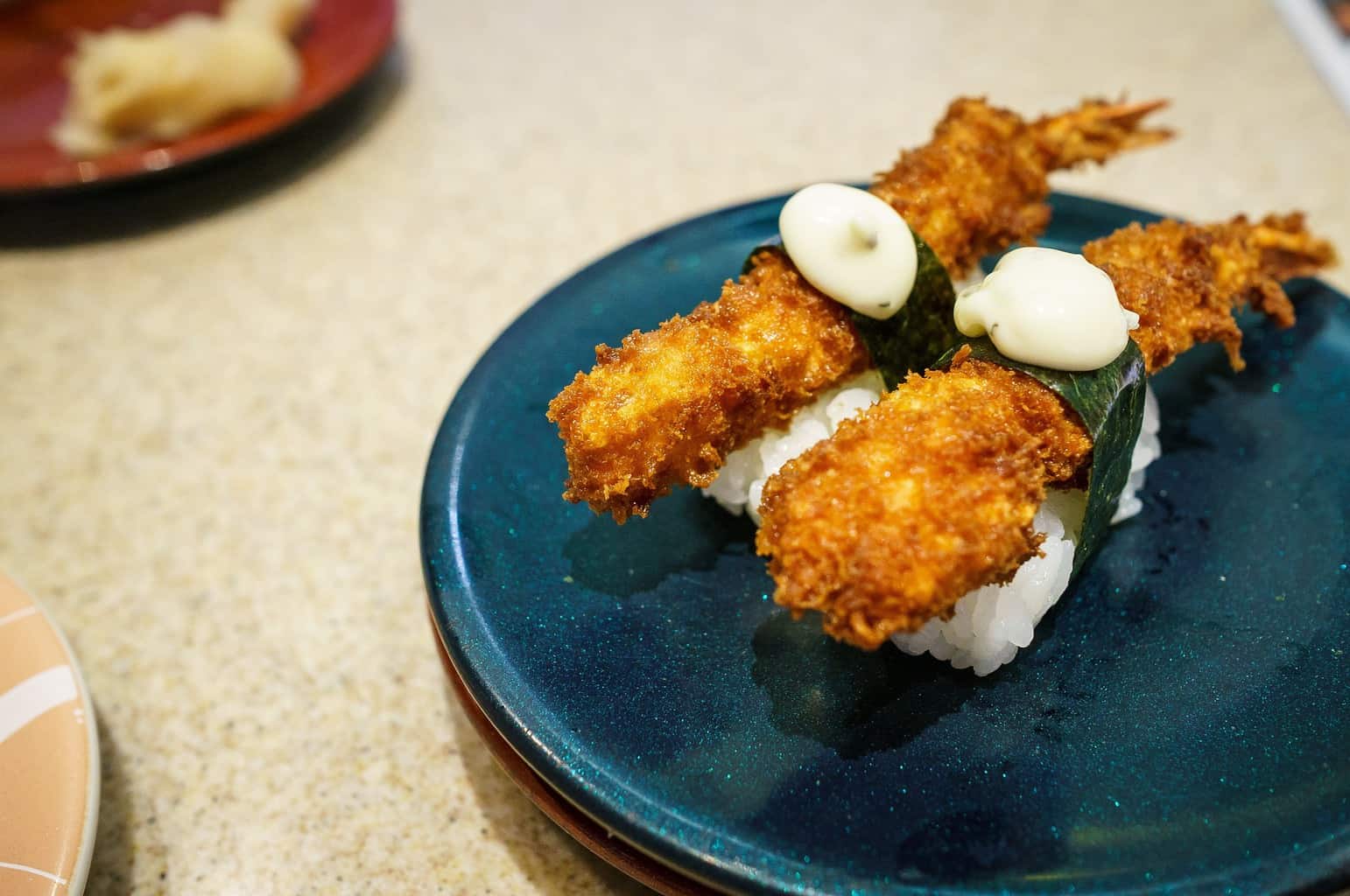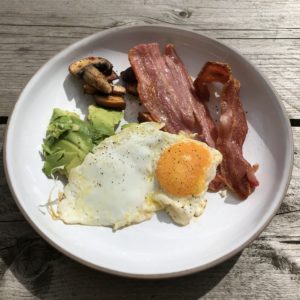- PhentermineLearn more about phentermine and how to get the most from your weight loss journey.
- ResourcesAdditional information and tools to help you make the most of your effort.
- AlternativesLearn more about the most popular weight loss medications and science-backed supplements
What is the Okinawa Diet?
Published on December 12, 2024

Okinawa, nestled far south in Japan, boasts a population with some of the longest lifespans globally (1). Since 1975, researchers have explored the secrets behind the islanders’ remarkable longevity.
According to several studies, their lifespan can be explained by environmental, genetic, and lifestyle factors. Many scientists believe that one of the main reasons why this happens is because of their diet. And that the features of the diet such as high antioxidant intake and low levels of saturated fats help in reducing the risk of various cardiovascular diseases, chronic diseases, and some cancers.
What is the Okinawa Diet?
The Okinawa diet means the diet followed by the people who live in Okinawa Island. Their diets, as well as their lifestyles, are known to give them longevity, wherein their residents are more likely to live longer and less likely to experience age-related diseases (2).
The traditional eating patterns of the residents involve foods that are low in fats and calories and high in carbs. They usually consume large amounts of vegetables and other soy products and occasional amounts of rice, noodles, fish, and pork.
As time goes by, the complexity of modern society has led to the changes in their dietary habits and food production and focus on the macronutrient contents of the said diet. Although it retains its low calorie and high carb intake, the Okinawa diet now considers more fat and protein.
Originally, the carb content is 85 percent, the protein content is 9 percent, and the fat content is 6 percent in an Okinawa diet. Today, the carb content is 58 percent, the protein content is 15 percent, and the fat content is 28 percent (3).
Moreover, the people from Okinawa usually serve food as medicine and use traditional Chinese medicine known to provide various health benefits. To cure diseases and illnesses, the Okinawans utilize spices and herbs, such as mugwort and turmeric (3).
Aside from that, their lifestyle usually focuses on mindful eating practices and daily physical activities. The health benefits provided by the traditional Okinawan diet lead the modern world to follow this kind of diet, especially to promote weight loss.
What Foods to Eat in an Okinawa Diet?
Usually, the food involved in an Okinawa diet includes macronutrient whole foods that are high in antioxidants. These nutrients are crucial to your body for it to function properly. On the other hand, antioxidants are important for your body to be protected against cell damages.
And unlike typical Japanese, Okinawans are known to consume less rice. They consume more sweet potatoes as the main source of their calories. They also eat many legumes, whole grains, and vegetables.
The modern Okinawan diet consists of (3):
- 58 to 60 percent vegetables including sweet potato, green papaya, pumpkin, Chinese okra, carrots, cabbage, bitter melon, daikon radish, bamboo shoots, kelp, and seaweed
- 33 percent grains including noodles, rice, wheat, and millet
- 5 percent soy foods including edamame, natto, miso, and tofu
- 1 to 2 percent meat and seafood including seafood, fish, and pork
- The other 1 percent for tea, spices, dashi, and alcohol
Additionally, the Okinawan diet liberally includes jasmine tea as part of it. It is also common for people who follow such a diet to consume antioxidant-rich turmeric (3).
What Foods to Avoid in an Okinawa Diet?
Due to the isolation of Okinawa Island, various kinds of foods are not available for the residents. That is why the traditional Okinawa diet is more restrictive compared to the modern one. To follow the diet, there are foods that you are restricted to eat, such as (3):
- Meats including sausage, hotdogs, salami, ham, bacon, and other cured meats
- Animal products including egg and dairy such as yogurt, butter, cheese, and milk
- Processed foods including snacks, breakfast cereals, grains, refined sugars, and processed cooking oils
- Legumes other than soybeans
- Other foods including fruits, seeds, and nuts
The modern Okinawa diet allows more flexibility, especially that it is primarily based on the number of calories consumed. The consumption of low-calorie foods such as fruits is allowed, but the consumption of high-calorie foods such as seeds, nuts, and dairy products should be controlled.
Health Benefits of the Okinawa Diet
The Okinawa diet is known to provide various health benefits, mainly because of its high antioxidant content and macronutrient whole foods. Here are the health benefits of the Okinawa diet:
-
Longevity
The traditional Okinawa diet is known for its benefit when it comes to the lifespan of its residents. Do you know that Okinawans are known to be centenarians? It means that they live for at least 100 years of age compared to those people living in other parts of the world (4).
On the other hand, the modern Okinawa diet is also found to promote longevity. According to several studies, factors such as environmental, genetics, and lifestyle choices play a huge role in influencing longevity.
Moreover, high levels of free radicals in your body can aggravate aging. These free radicals may result in cellular damage and stress in your body (4). But if you consume food rich in antioxidants, you may be protected from free radicals that can slow down your aging process. Plus, it can help you reduce your risk of inflammation.
The traditional Okinawa diet primarily consists of plant-based foods providing anti-inflammatory and antioxidant capacities, which can eventually promote longevity. Diets containing low-protein, low-calorie, and high-carb foods promote a longer lifespan. Studies found out that diets restricting calories and made of less protein and more carbs help in promoting longevity, compared to high-protein diets (4).
-
Reduced risk of chronic diseases
The Okinawa diet is not only known to promote longevity but also to help combat various chronic diseases such as diabetes, heart disease, and cancer. The Okinawan diet plays a vital role in reducing the risk of these diseases because the foods involved are rich in fiber, essential nutrients, and anti-inflammatory compounds while being low in refined sugar, saturated fats, and calories.
As already mentioned, the Okinawans usually don’t eat rice; instead, they eat sweet potatoes as the main source of their calories. Some studies even claim that sweet potatoes are one of the healthiest foods that you can ever consume.
Sweet potatoes are found to contain a high dose of fiber while low in glycemic index (GI). It means that these do not contribute to an increase in your blood sugar. Aside from that, sweet potatoes offer various nutrients like magnesium, potassium, calcium, vitamin A, and vitamin C (3).
Additionally, sweet potatoes, as well as other vegetables, contain plant compounds called carotenoids. These have anti-inflammatory and antioxidant benefits, which play a huge role in avoiding type 2 diabetes and heart disease (5).
The Okinawa diet also provides high soy levels. Soy-based foods are linked to a reduced risk of chronic diseases like cancer and heart disease.
Potential Downsides of an Okinawa Diet
Okinawa diet comes with various health benefits, but it also comes with major drawbacks.
-
Fairly restrictive
This kind of diet doesn’t include different food groups that are crucial for your body. This diet may compel you to comply strictly with the food groups allowed in the same, limiting you to take nutrients from other food sources. Furthermore, some foods included in the Okinawa diet may not be accessible to you.
The Okinawa diet contains very little nits, seeds, fruits, and dairy. If you try to realize it, these foods are good sources of vitamins, minerals, fiber, and antioxidants, which are truly beneficial for your entire well-being (6).
You don’t have to restrict these food groups as it can be detrimental to your overall health, especially if you cannot replace the nutrients they contain to your diet. The good news is that the mainstream or the modern version of the Okinawa diet is preferable as it can help you have more flexible food choices.
-
High in sodium
The major drawback of an Okinawa diet is its high sodium content. Do you know that this diet can make you consume at most 3,200 mg of sodium a day? The amount of sodium content is not recommended for people who have high blood pressure (7).
The American Heart Association suggests taking 1,500 mg of sodium a day if you have high blood pressure. If you have normal blood pressure, you can consume up to 2,300 mg of sodium a day, and that is about one teaspoon of salt (8).
If you consume food with high sodium, then you will increase your retention of fluid within your blood vessels. Eventually, it will lead to increased blood pressure. Since the Okinawa diet may result in high potassium consumption, it can help in offsetting the detrimental effects of high sodium consumption.
The consumption of an adequate amount of potassium can help your kidney to get rid of excess fluids, which can then result in reducing blood pressure (9). That is the reason why if you want an optimal result in an Okinawa diet, you should limit your sodium intake, specifically by avoiding foods containing high sodium, such as dashi or miso.
Is the Okinawa Diet Good For You?
Indeed, the Okinawa diet offers various health benefits, but many people would prefer a flexible and less restrictive diet. Then again, this diet has many positive health effects, especially that it focuses on eating vegetables and other foods high in fiber and antioxidants. Aside from that, it restricts you from eating foods containing refined grains, sugar, and excess fat.
The Okinawa Diet, along with the Okinawan culture such as mindful eating and regular exercise, is more effective in providing many health benefits. And these principles can be applied not only to this kind of diet but also to other diets as well as lifestyles.
If you are still in doubt of this diet, it is an excellent choice to seek help from the expert. In that way, you can create a more personalized plan according to your wants and needs.
Similar Diets
Other diets such as the Mediterranean diet and the DASH diet have the same benefits as the Okinawa diet (10). The Mediterranean diet includes many legumes and vegetables compared to the Okinawa diet, which focuses on soy. On the other hand, the DASH diet also includes fruits, vegetables, legumes, fish, and low-fat dairy products. Unlike the Okinawa diet, this diet consists of all major food groups while decreasing the intake of sugar, fat, and salt.
Conclusion
The Okinawa diet, as the name implies, is mainly based on the diet of the residents of Okinawa. This kind of diet focuses on high fiber and nutrient-dense foods while reducing the consumption of sugar, fats, and processed foods.
The Okinawa diet is known to promote a longer lifespan as well as to reduce the risk of various chronic diseases. But this diet is not perfect as it also comes with major drawbacks such as being high in sodium and more restrictive. The good news is that the modern Okinawa diet can offer a more flexible diet and promotes the benefit of weight loss. Of course, if you want a more effective result that is supported by several pieces of evidence, then you should always opt for the traditional form.
If you want to boost longevity and improve your entire well-being, the Okinawa diet may be a perfect diet for you.
References:
- https://www.ncbi.nlm.nih.gov/pubmed/30202288
- https://www.verywellfit.com/the-okinawan-diet-2507127
- https://www.ncbi.nlm.nih.gov/pubmed/24462788
- https://www.ncbi.nlm.nih.gov/pubmed/22253498
- https://www.ncbi.nlm.nih.gov/pubmed/21506930
- https://www.ncbi.nlm.nih.gov/pubmed/24695889
- https://www.ncbi.nlm.nih.gov/pubmed/27216139
- https://www.heart.org/-/media/data-import/downloadables/pe-abh-why-should-i-limit-sodium-ucm_300625.pdf
- https://www.ncbi.nlm.nih.gov/pubmed/26039623
- https://www.verywellfit.com/the-okinawan-diet-2507127


